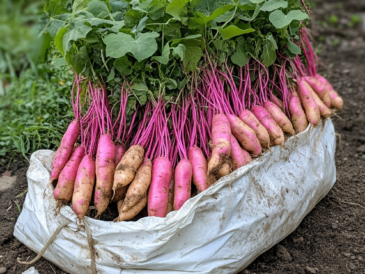White plastic cutting boards are kitchen essentials in many households. They are lightweight, durable, and perfect for slicing vegetables, meats, and more. However, one of the biggest downsides to these boards is how quickly they can stain and absorb odors. Over time, even regular washing may not be enough to keep them looking pristine and smelling fresh. But don’t worry—I have a cleaning hack from my ma that requires minimal effort and works wonders on dirty white plastic cutting boards. Here’s how you can do it too!
Part 1: The Simple Method to Restore Your Cutting Board
Why Do White Plastic Cutting Boards Get So Dirty?
Before diving into the cleaning method, it’s important to understand why white plastic cutting boards become stained and smelly. The porous surface of plastic cutting boards can absorb food juices, oils, and dyes, especially from vibrant foods like tomatoes, carrots, turmeric, or beets. Even with regular soap and water, these stains can be stubborn and hard to remove. Moreover, if not cleaned properly, bacteria and odors can set in, making the board unhygienic and potentially unsafe for food preparation.
The Cleaning Trick My Ma Taught Me
The cleaning trick my ma shared with me is incredibly simple and involves everyday household items that you probably already have in your kitchen. The beauty of this method is that it doesn’t require any intense scrubbing or expensive cleaning products.
What You’ll Need:
- Baking Soda: A natural cleaning agent that helps lift stains and deodorizes.
- Hydrogen Peroxide: An antiseptic that kills bacteria and removes stains without harsh chemicals.
- Dish Soap: Cuts through grease and food residue.
Step-by-Step Guide to Effortlessly Clean Your Cutting Board
- Gather Your Supplies: Start by assembling your baking soda, hydrogen peroxide, and dish soap. Ensure your cutting board is dry before you begin.
- Sprinkle Baking Soda: Lay your cutting board flat on a surface. Generously sprinkle baking soda all over the surface. Baking soda is mildly abrasive, which helps scrub away stains, and it neutralizes odors.
- Add Hydrogen Peroxide: Pour a small amount of hydrogen peroxide over the baking soda. The liquid should be enough to create a paste-like consistency when mixed with the baking soda. Hydrogen peroxide is a natural bleaching agent and will help lift deep stains from the board.
- Add a Few Drops of Dish Soap: Enhance the cleaning power by adding a few drops of dish soap to the mixture. Dish soap cuts through any grease or oil residue on the board.
- Let It Sit: Here’s the best part—no scrubbing required! Simply let the mixture sit on the cutting board for 10-15 minutes. This allows the ingredients to break down stains, kill bacteria, and remove odors.
- Rinse Thoroughly: After the mixture has sat for a while, rinse the cutting board thoroughly with warm water. Use a sponge or cloth to wipe away any remaining paste. You’ll notice that the stains have significantly faded, and any odors have disappeared.
- Dry Completely: Once rinsed, dry the cutting board with a clean towel or let it air dry completely before storing it. Drying the board thoroughly prevents bacteria or mold from growing.
Why This Method Works So Well
- Baking Soda: Acts as a mild abrasive to scrub away stains and has deodorizing properties to remove lingering smells.
- Hydrogen Peroxide: A natural bleaching agent that safely whitens surfaces and eliminates bacteria without harsh chemicals.
- Dish Soap: Breaks down grease and food residues, making the cleaning process more effective.
This combination of ingredients creates a powerful cleaning solution that lifts stains, kills germs, and deodorizes—all with minimal effort required.
Part 2: Tips to Keep Your Cutting Board Looking New
Ready to discover how to maintain that pristine condition and extend the life of your cutting board? Let’s dive into some essential tips that will make all the difference!
Just click page “2” below




